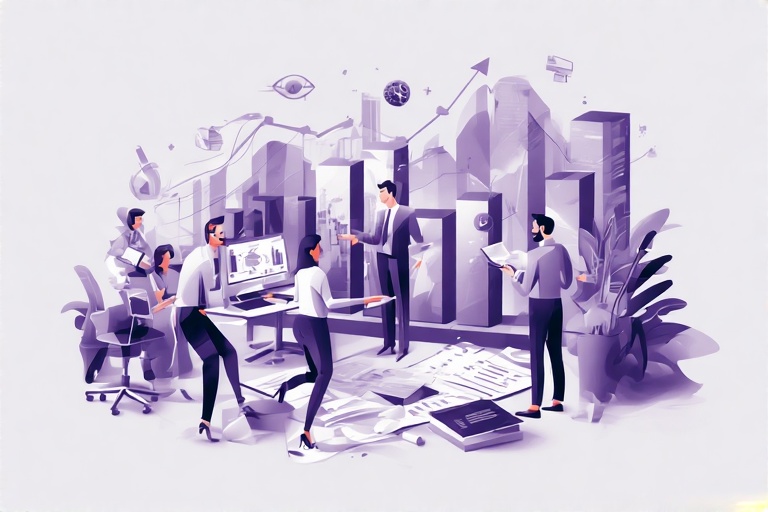After years of pilot projects and theory-laden discussions, 2025 marks a pivotal moment: generative AI (GenAI) and advanced analytics are moving from “nice-to-have” experiments to dependable engines of top-line growth. This shift isn’t driven by hype—but by tangible use cases, executive buy-in, and new organizational practices that translate AI outputs into real dollars. This article examines the hard data, industry trends, and case studies that explain why AI’s journey from novelty to revenue driver finally reaches critical mass in 2025.
1. From Experimental to Enterprise-Scale Adoption
In earlier years, many companies regarded AI as a side project. According to PwC’s October 2024 survey, just 16 percent of executives fully integrated AI into strategy; by early 2025, that figure soared to 49 percent. This rapid adoption signifies that AI is no longer siloed within R&D or marketing teams. Instead, AI technologies are being embedded in core processes—sales forecasting, supply-chain planning, customer service automation—where they generate measurable returns.
2. Revenue Orchestration: AI’s New Strategic Role
“Revenue orchestration”—the alignment of sales, marketing, RevOps, and finance around a unified data backbone—is emerging as a top trend for 2025. Clari’s research highlights that AI will not just assist with data cleanup or reporting; it will actively guide deal prioritization, resource allocation, and risk mitigation. By automating routine tasks and surfacing high-value insights, AI councils—cross-functional leadership teams dedicated to AI strategy—ensure that machine-driven recommendations translate directly into revenue gains.
3. High-Impact Use Cases Fueling Growth
Across sectors, organizations are reporting concrete revenue uplifts tied to AI. Google Cloud’s 2025 industry report finds that a third of enterprises are already seeing double-digit improvements in efficiency and customer engagement thanks to GenAI-powered search, recommendation engines, and virtual assistants. In retail, AI-driven personalization engines increase average order value by up to 20 percent. In manufacturing, predictive maintenance models reduce downtime by 15 percent, boosting throughput and margins.
4. Sales and Marketing: Early Winners
Sales analytics platforms powered by large language models (LLMs) and predictive algorithms have become almost mandatory. A recent survey shows 83 percent of companies rank AI as a top priority in their 2025 sales plans, citing 25–30 percent improvements in forecast accuracy and pipeline velocity. Marketers leverage AI to optimize ad spend in real time, driving up click-through rates and lowering customer acquisition costs by 10–15 percent.
5. New Leadership Models and Governance
As AI’s revenue impact grows, governance and oversight structures have evolved. McKinsey’s global survey indicates that organizations with CEO-led AI governance report the highest EBIT gains from GenAI, compared to those where oversight is more diffuse. Leading companies appoint AI champions—often at C-suite level—to ensure ethical frameworks, data integrity, and strategic alignment drive every AI initiative.
6. Overcoming Challenges Through Scale and Process
Despite clear benefits, three hurdles risk slowing AI’s climb to revenue champion: fragmented data, talent shortages, and ethical risks. In response, high-performing firms invest heavily in modern data platforms that break down silos and enforce quality standards. They also launch upskilling programs—partnering with universities and online academies—to build homegrown AI expertise. Finally, they adopt transparent policies and continuous audit mechanisms to mitigate bias and protect intellectual property.
7. The Tipping Point: Why 2025 Matters
Several forces converge in 2025 to make AI a reliable revenue lever:
- Maturity of GenAI Platforms: LLMs and multimodal models now offer enterprise-grade security, explainability, and integration APIs
- Executive Commitment: Nearly half of technology leaders have woven AI into strategic plans, ensuring budget, talent, and governance are in place.
- Proven ROI: Case studies across retail, finance, manufacturing, and services document revenue uplifts of 10–25 percent, justifying further investment.
- Cross-Functional Alignment: Revenue orchestration and AI councils break down silos, ensuring that AI insights translate into coordinated action.
Conclusion
2025 is the year AI graduates from buzzword to balance-sheet driver. Backed by robust platforms, C-suite sponsorship, and clear governance, AI now fuels revenue growth across industries. The companies that seize this moment will not only capture immediate gains but also build the organizational muscle to harness AI for sustained competitive advantage. In the race for growth, AI has moved from cheerleader to pace setter—and those who ignore this shift risk watching their rivals pull ahead.







Add a Comment